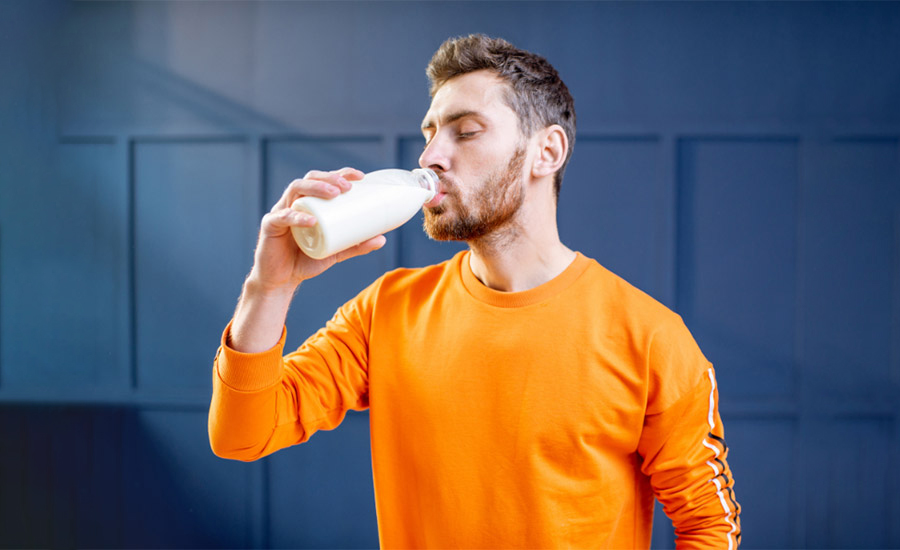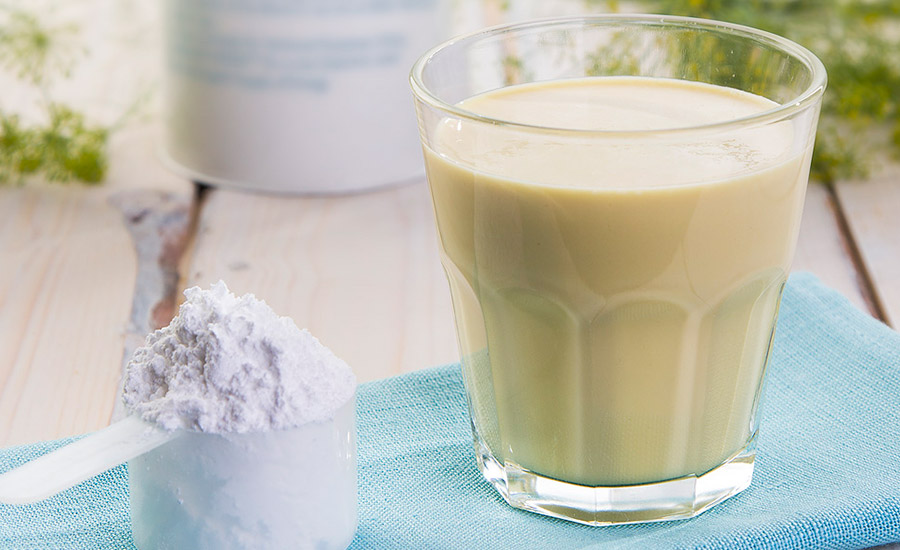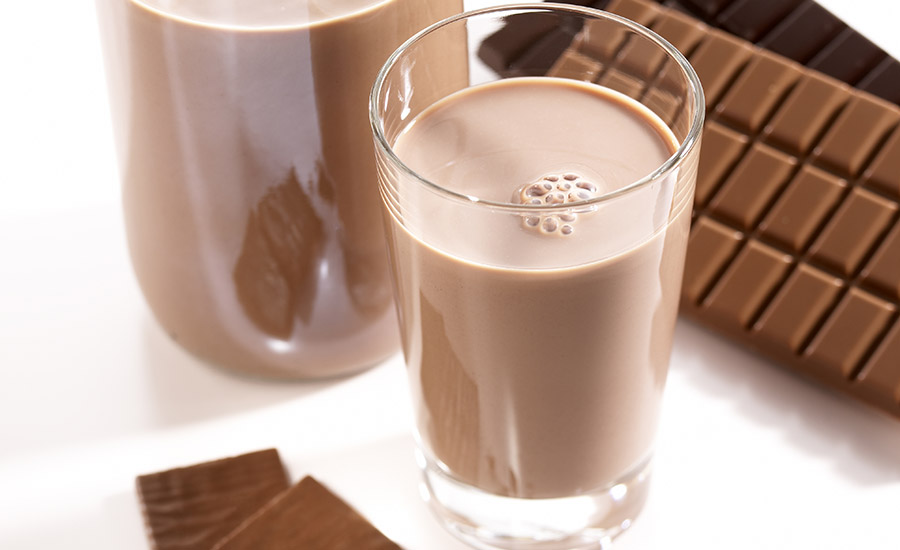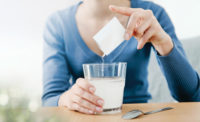In good and times and bad, it is difficult to match the excitement of sports.
Going hand-in-hand are sports nutrition products, which are difficult to top in the dairy industry regarding future growth. According to Global Market Insights, the sports nutrition ingredients market will hit a “grand slam” from 2023 to 2032. The market size reached $3.5 billion in 2022, but will more than double to $7.3 billion in 2032, growing at a 7.8% compound annual growth rate (CAGR).
North America will account for approximately one-third ($2.5 billion) of the sports nutrition ingredient market in 2032, predicts the Selbyville, Del.-based research firm. “Growing prevalence of obesity across the globe is elevating consumer awareness about benefits of dietary supplements,” Global Market Insights maintains in its February report. “The dietary changes resulting from these factors are creating a strong demand for nutritional food and food ingredients, presenting a strong impetus for the industry growth.”
 The sports nutrition category is evolving into a broader market known as “fit lifestyle” products.
The sports nutrition category is evolving into a broader market known as “fit lifestyle” products. Photo by RossHelen via Canva. Image courtesy of A&B Ingredients.
Gen Z could be a key to growth, with the demographic accounting for 7.5% CAGR, the research group hypothesizes. “The spending power of Gen Z has increased, which when combined with their growing awareness about healthy eating makes them the leading market growth facilitator,” Global Market Insights suggests. “With more of the Gen Z (demographic) entering the employment market, the spending power is slated to go up and create new revenue prospects for the industry.”
Power of protein boosts nutrition
Non-dairy sports nutrition beverages have certainly made headlines this year, led by PRIME, a hydration drink founded by celebrities Logan Paul and KSI. It has been an anecdotal huge hit among teenagers and can now be found at many major retailers.
However, when it comes to protein-fortified products, which many consumers seek, dairy-based sports nutrition ready-to-drink (RTD) beverages and foods continue to lead the way, states Niki Kennedy, director, Insights and Content, Chicago-based Glanbia Nutritionals.
“Dairy-based sports nutrition RTDs continue to drive category growth while combination formulas (most commonly dairy and soy) are lagging. Based on some data we regularly review, consumers appear to be less brand oriented in RTD versus RTM (ready to mix),” Kennedy says. “In RTMs, we see private label struggling and certain leading brands showing significant growth.”
Wayzata, Minn.-based Cargill’s Christine Addington adds the company is seeing three key themes as it relates to dairy-based sports nutrition beverages: higher protein inclusion levels, less sugar, and functional ingredients.
“Our experience aligns with research from Innova Market Insights, which found high source of protein (27%), low sugar (26%) and functional ingredients (23%) are the most influential claims for consumers who purchase sports nutrition products. (“Protein Power: Fueling the World with Global Sports Nutrition, Innova Market Insights, 2023),” relays Addington, Cargill’s enterprise customer technical lead.
Protein remains the big driver, Addington adds, with 20 grams of protein now a common threshold, with some customers aiming for 30 or even 40 grams of protein in a single serving.
“At the same time, consumers of these products are closely watching their sugar intake, with many opting for products touting no added sugar,” Addington explains. “Interest in health-promoting/functional ingredients continues to grow, especially after COVID. Anyway that customers can boost nutritionals, while also providing functionality, is a big unlock.”
Protein is still top of mind for these consumers, and protein sourced from dairy in formats like milk protein drinks, protein ice cream and yogurt is gaining interest with North American active nutrition consumers, states Mike Medina, category marketing director, Specialized Nutrition and Dairy, Chicago-based ADM, adding the active nutrition arena is “ripe with opportunity.”
“We’re seeing the flexitarian movement converge with dairy-based offerings, opening the door for a wide range of innovative protein-forward dairy products that blend traditional and alternative protein options,” he explains. “We can see this in protein shakes that use plant protein sources like pea, chickpea, oat, almond, coconut, and even hemp blended with dairy proteins.”
Protein continues to be key, but Fenton, Mo.-based IFPC is building awareness around how functional ingredients are used by the body. “Essentially, if you look at an ingredient like fiber, not all fibers are absorbed and used by the body in the same way,” notes Jenn Adams, director of Ingredient Technology and Applications. “You may see added functionality by a certain type of product and less negative effects. In the case of fiber, you want to avoid gastrointestinal impact. This is true for many ingredients that support a specific health function. They are not all equal when it comes to functionality, bioavailability, and tolerance.
Sports nutrition formulations should focus on delivering health benefits such as protein, i.e., rice ingredients and even faba bean, adds Kyle Krause, product manager, Functional Fibers and Carbohydrates, North America, Parsippany, N.J.-based BENEO.
 Sports nutrition products have gone mainstream, something BENEO’s Kyle Krause refers to as “sportification.” Image courtesy of BENEO.
Sports nutrition products have gone mainstream, something BENEO’s Kyle Krause refers to as “sportification.” Image courtesy of BENEO.
“While protein has long been a predominant choice for competitive athletes like weightlifters, the range of sports nutrition consumers has grown beyond the extreme/competitive arenas. Protein still remains a plus for this widening market,” he says. “Palatinose delivers sustainable energy over time. When it comes to nutritional properties, the ingredient delivers full carbohydrate energy (4 kcal/g) and is unique in its ability to deliver a slow release of glucose and thus allowing for a lower rise in blood glucose.”
Another interesting trend to note is sports nutrition RTD beverages are going back to the basics of traditional milk. “Considering the trend of leisure athleticism, people are looking more to traditional and cost-efficient sports beverages to support their active lifestyle,” maintains Shannon Fitzgerald, marketing manager for Montvale, N.J.-based Balchem. “Reminiscent of the ‘Got Milk’ campaign of the 1990s, the ‘You’re Gonna Need Milk for That’ campaign connects traditional dairy milk as a ‘go-to’ beverage to fuel athletic performance,” Fitzgerald says.
Going mainstream
There is no doubt protein is a key ingredient for sports performance and will be for the foreseeable future. This does not mean it is a stagnant market however. Sports nutrition products provide benefits beyond protein and the market continues to evolve.
Electrolytes, which help athletes maintain fluid balance, are one additional benefit, with brands also adding antioxidants, vitamins, and other ingredients.
“Another point of differentiation is the electrolyte source. Consumers are getting savvy that different salts might increase their hydration or cellular transport, ideas that were not mainstream or in consumer lingo a few years back,” says Dr. Janice Johnson, food technical advisor, Cargill. “The electrolyte source can also add to consumer perceptions in other ways. For example, both sea salt and Pink Himalayan Salt appeal to label-conscious consumers, as they are perceived to have more positive attributes than traditional salt.”
Sports and active nutrition categories are well positioned for significant expansion in the coming years, Joe O’Neill, vice president, Sales and Business Development, for Fairfield, N.J.-based A&B Ingredients suggests.
“One of the most notable drivers for this growth is the shift in consumer trends toward health and nutrition. Sports nutrition products are not exclusively geared toward athletes anymore. The sports nutrition category is morphing into a wider category of active and lifestyle nutrition as a response to the holistic health and well-being trend becoming more mainstream,” O’Neill asserts.
Even during the current times of financial challenges, consumers are committed to sustaining their health habits, O’Neill continues. “According to a 2022 survey from Accenture, 80% of consumers said they intend to maintain or increase their spending on areas related to health and fitness.”
Kennedy concurs that the market for dairy-based sports nutrition RTDs and foods has become fully mainstream, expanding with interest going beyond the core of fitness fanatics to a much wider active lifestyle consumer. “We are seeing that products positioned toward children and young adults are growing. Convenience provided by RTDs, protein bars, and snacks has led to more use of these products outside of just exercise recovery. Additionally, the health halo of protein is now ubiquitous,” Kennedy suggests.
Krause refers to the sports nutrition becoming mainstream trend as the “sportification” of foods and beverages.
 A high source of protein, low sugar and functional ingredients are the most influential claims for consumers who purchase sports nutrition products, reports Cargill.
A high source of protein, low sugar and functional ingredients are the most influential claims for consumers who purchase sports nutrition products, reports Cargill. Image courtesy of Cargill.
“For example, a health and wellness report by FMCG Gurus in 2022 indicated that 56% of global consumers say they research different ingredients that can improve their health,” he states. “Additionally, a 2022 Health Focus International Trends Study indicated that 79% of global consumers feel that overall physical health is very/extremely important in contributing to overall health,” says Krause. “The top five benefits respondents cited as important are physical energy, feeling good, mental energy, energy boost and sustained energy.”
A winning strategy is introducing RTD beverages with multiple functional benefits, such as a protein powder enriched with prebiotic dietary fiber for improved gut health, states Hannah Ackermann, registered dietitian and director of marketing at Schaumberg, Ill.-based COMET. “As inflation continues to rise, this approach presents a smart way to offer consumers added value precisely when they need it most,” she says. “If a customer has the choice between a basic protein powder and one with added gut health benefits, which do you think they will choose?
No sugar tonight
Years ago, a host of sports nutrition beverages provided desired protein, but also brought with it calories and/or sugar that many consumers do not seek. However, this has changed. Drinks branded with the claims “reduced sugar,” “no-sugar” and “zero-sugar” have filled the marketplace.
In North America, 65% of active nutrition consumers stated they are taking action to change their diet by reducing their sugar intake, Medina tells Dairy Foods. Plus, research shows eight in 10 U.S. adults are actively engaged in sugar reduction, and of those consumers, 69% find sugar reduction important in dairy.
“Our research also shows that sugar reduction becomes 56% more important for those purchasing functional foods and beverages,” Medina says. “Shoppers are also paying closer attention to the ingredient label during their trips down the grocery aisle, seeking ingredients they recognize. This carries over into active and sports nutrition, with 47% of consumers stating that the type of sweetener is important when choosing a new protein dairy beverage.”
Reduced or zero-sugar products can bring with them a change in taste, presenting a challenge for ingredient suppliers, however. “We support active nutrition consumers’ desire for reduced-sugar, dairy-based products that taste great. Through our vast library of sweetening solutions in combination with our comprehensive formulation approach — Replace Rebalance Rebuild — we replace sweetness, rebalance flavor, and rebuild functionality,” Medina notes. “Our portfolio is ever-expanding, providing exemplary sensory experiences, while reaching sugar reduction and clean-label targets.”
For example, ADM launched SweetRight Stevia Edge-M, offering improved sweetening, reduced bitterness and increased solubility compared to Rebaudioside (Reb) M, he continues.
Formulating without sugar or artificial sweeteners may sometimes mean a finished product that’s a little less sweet, but as long as developers manage any negative flavor attributes from other ingredients in the formula, brands can deliver on both label and taste expectations, Addington states.
“Cargill’s newest sweetening system, EverSweet stevia sweetener + ClearFlo natural flavor can help, offering a more sugar-like experience than other stevia options,” Addington maintains. “It delivers rounded sweetness while also managing many off flavors associated with other ingredients in the formula. Plus, EverSweet + ClearFlo can even enhance characterizing flavors like chocolate and fruit flavors.
“Formulators will likely need to balance sweetness/acidity changes as they move from full sugar to no-added-sugar systems, as high-intensity sweeteners can impact other flavors and tastes. Fortunately, ingredient suppliers like Cargill can help brands navigate these and other formulation considerations,” Addington continues. “While stevia does a good job of replacing sugar’s sweet taste, brands may also need to replace its bulk.”
Regarding lingering/bitter/metallic off-notes of single sweeteners, a blend of sweeteners can help. “Non-artificial sweeteners are a little more challenging, but new FDA-approved sweeteners make it easier to blend them for a true sugar taste,” relays An Ho, director of food science and innovation for IFPC. “Another challenge is the limitations of amounts per serving, so we must balance the sweet taste with other non-artificial sweeteners and their maximum limits to stay within approved ranges.”
Balchem has taken a one-stop-shop approach to meeting consumer needs, Fitzgerald reveals. “We are formulating ingredient systems that contain high-intensity sweeteners for lower or no added sugar,” she says. “We also are formulating with high quality proteins, such as whey, for added protein content that can also deliver on desirable product attributes such as clear/ transparent beverages.”
BENEO’s chicory root prebiotic fibers, Orafti Inulin, and Oligofructose, are recognized by official bodies in Europe and the United States and they are on the list of approved dietary fibers published by the FDA, answers Krause.
A&B Ingredients’ offerings include chicory root fiber, or inulin, as a “healthy” solution for sugar and calorie reduction in dairy and non-dairy beverages and sports nutrition products.
 Not all ingredients are equal when it comes to functionality, bioavailability, and tolerance, suggests IFPC.
Not all ingredients are equal when it comes to functionality, bioavailability, and tolerance, suggests IFPC. Image courtesy of IFPC.
“It’s highly soluble and offers enhanced creaminess where texture and mouthfeel are important,” O’Neill states. “In addition, the prebiotic effect of inulin supports digestive health and offers health benefits to consumers. The added fiber benefits of inulin support balanced nutrition in high-protein diets and help improve digestive function and regularity.”
COMET believes individuals on high-protein diets often fall short of their dietary fiber needs. Hence, as touched upon briefly earlier, its goal is to improve consumers’ gut health. “So rather than having to take another pill and create a new habit, consumers can swap out a food or drink they are already eating for one with more nutrient density,” Ackermann maintains. “We are able to produce multiple grades of our Arrabina fully-soluble powders that are heat and pH resistant. They can be used in not only powder supplements, but also shelf-stable RTD carbonated beverages, baked goods, and acidic beverages. The application opportunities are endless.”
Where do we go from here?
As previously highlighted, the sports nutrition ingredients market will more than double to $7.3 billion in 2032, according to Global Market Insights. “The future of the active nutrition arena is bright, with opportunities for new, innovative formats that meet consumers’ individual needs and routines,” ADM’s Medina suggests.
Exactly how the market doubles by 2032 should be fascinating. “Specifically, we expect that both dairy and non-dairy brands will put more emphasis on hydration, which is an important attribute for supporting physical and mental well-being,” Medina explains. “Additionally, as active nutrition consumers increasingly focus on recovery, brands may also begin to highlight how dairy and non-dairy products can aid in recovery and relaxation following exercise or at the end of an active day.”
ADM also sees dairy-based options extending beyond milks and RTD shakes in the future. “Think frozen dairy treats high in protein and fiber and low in sugar, RTD smoothies with fruits, grains, nuts, and spices, and dairy-based protein bars that deliver gut health support,” Medina says. “Tailored and functional dairy-based confections that provide various functional properties are also emerging, offering quick and delicious bursts of energy, protein content, and support for overall wellness needs.”
A&B Ingredients’ O’Neill sees the sports nutrition category evolving into a broader market that is becoming known as “fit lifestyle” products.
“Brands are adapting by adjusting their marketing to appeal not only to athletes but also to a broader consumer base, including women and older generations,” he notes. “This change reflects the fact that more people are recognizing the benefits of healthy living and staying active, whether they are maintaining their activity levels or rethinking their relationship with physical activity. This more inclusive approach is expected to allow the sports nutrition category to expand further, attracting active lifestyle and health-conscious consumers in the coming years.”
Look for more products with claims regarding sugar content, Cargill’s Addington predicts, adding protein will remain a priority.
“Plant-based products will likely continue to grow, as improvements on the ingredients side enable formulators to increase grams of protein per serving without sacrificing taste and mouthfeel,” Addington states. “And in the not-so-distant future, watch for the ‘next world’ of alternative sports nutrition products, fueled by precision fermentation. This technology could further close the gap between dairy-based and alternative protein sports nutrition products, powering a new round of innovation.”
Future trends will also likely continue to see growth in convenience products like “single serve packs or RTD bottles and in improved flavor for pre-workout (bitter caffeine sources cause a problem) and hydrolysates (very unfavorable flavor, but readily digestible),” IFPC’s Ho concludes. “The indulgent flavors will prevail, as most consumers do not want to ‘splurge’ on the real deal and can get some satisfaction from a nutritional drink/bar/powder that tastes like something that is counterproductive with their goals.”




